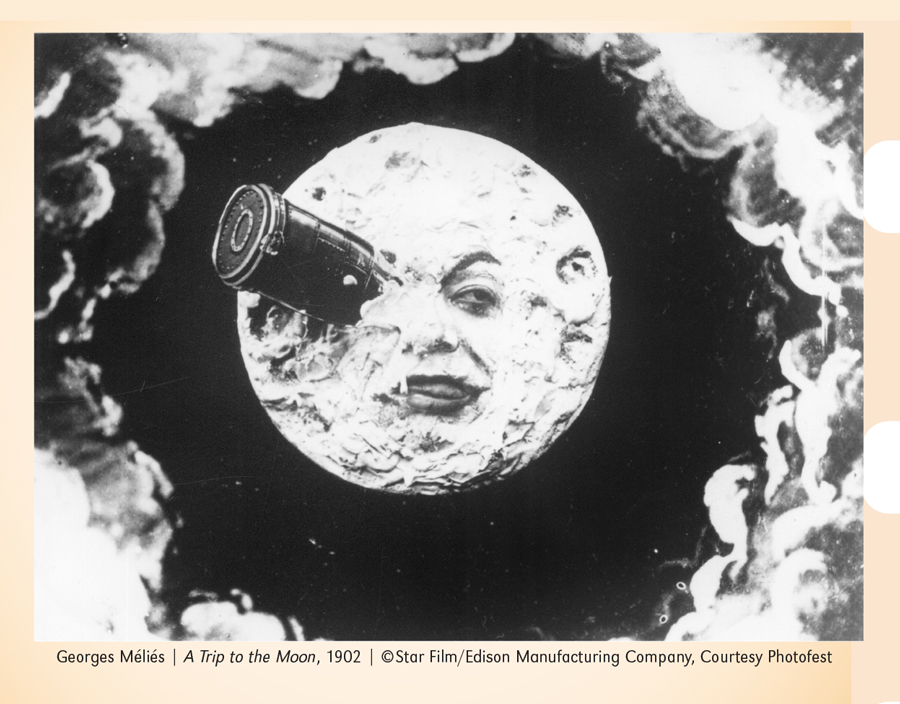All Right, David Schwartz, Ready For Your Close-Up?
Please ignore the man behind the curtain. Or better yet, don't. In the following interview we speak to David Schwartz, curator of New York's Museum of the Moving Image and a better viewfinder into the workings of film than the great Oz himself. A one-man repository of cinematic knowledge, theory, and insight, Schwartz also has a vast array of historical artifacts at hand, including an early spirograph used for showing shorts in arcades and Travis Bickle's legendary Mohawk. (Yes, it was a wig.) He also oversees one of the most exciting film series in the country, regularly bringing directors such as David Cronenberg and Atom Egoyan to the museum to show and discuss their films. In addition, Schwartz has an understanding of television and a growing curatorial focus on digital media, allowing him to discuss moving images on every front. Steven Lee Beeber spoke with Mr. Schwartz in his Astoria office.

schwartz: While the first films had been almost travelogues—shots of places and things that people would probably never see—within a few years, the idea of storytelling emerged. Edwin S. Porter was a pioneer. His big hit film was The Great Train Robbery. It was made in 1903 and literally played for years. It made over a million dollars, which made it a blockbuster at the time. But even before that he was working with editing films to tell stories rather than just to show images. And then there were also trick films in the beginning, crude forms of animation where the filmmakers were painting directly onto the film—like with Méliès' Trip To The Moon, which we have in the mutoscope form upstairs. There was a lot of experimentation from the beginning and it was a very rich period because there weren't any rules yet, any formulas for how stories would be told. For instance, there's another Edwin S. Porter film, The Life of an American Fireman, a famous film that cuts between a house that's on fire and a fireman leaving the station and racing towards it. Now we, as an audience, are used to watching multiple narratives that cut back and forth from one to the other, but then they weren't; so when the film cuts from one story to the other, it goes back in time a bit so that we pick up on the previous story exactly where we left off rather than where we would be seeing it at that particular moment in time.
conduit: Kind of like Pulp Fiction.
schwartz: It's sort of like that. But the codes hadn't been written yet, so it wasn't to break the rules. Filmmakers were just experimenting and learning to speak a different artistic language. It was D.W. Griffith who really revolutionized film, primarily through the use of the close-up, which is so integral to cinematic storytelling. That didn't come along until 1905, 1906.
conduit: That reminds me of a book I recently read by Lenny Kaye about the birth of popular music, Some Call It Madness. In it, he says that the electrification of sound, especially through microphones, was one of the main catalysts because it allowed singers to use low volume and subtle phrasing—to "croon"—rather than to belt out a song to reach the rafters. Was there a similar relationship between the birth of the subtle, even cool, performance and the development of technologies such as lenses for close-ups? After all, the original silent stars seem so melodramatic because of their exaggerated gestures.
schwartz: There could be some relationship. I mean, what's amazing is when you come across an actor like Buster Keaton who had an innate understanding of how little he could do, yet how much affect he could get on screen by being deadpan, by not reacting, by holding back. He knew the comic effect of that, and he really wasn't trying to come across as cool, but he was. The character he played wasn't cool, but he was, his sensibility certainly was, and it went against a lot of sentimentality. I think the early stars like Chaplin or Lillian Gish tend to be much more sentimental, and Keaton had a tough unsentimental side.
conduit: Which is the essence of cool.
schwartz: Cool also relates to an understanding of how the modern world works. The difference between Chaplin and Keaton is the difference between the nineteenth-century Victorian musical tradition and a more modern sensibility. Keaton was fascinated with machines. When he first walked onto a movie set, Fatty Arbuckle was directing the shorts that Keaton acted in. Keaton watched Arbuckle direct and he was really fascinated with the machinery, with how the camera worked and how moving images worked as a mechanical thing. There's obviously something modern about the medium of film; it's a twentieth-century medium. So Keaton's understanding of cinema is tied into his understanding of how the modern world works.

